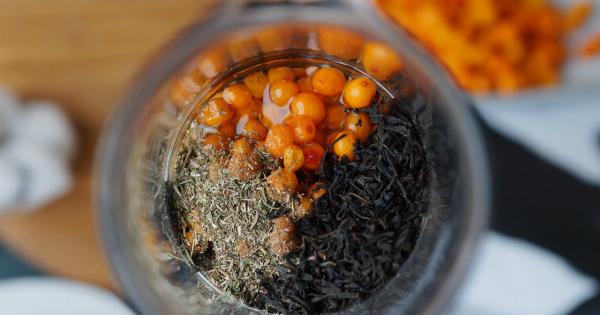When it comes to our diet, we often focus on consuming nutritious foods that are beneficial for our health.
However, what if we told you that some foods that you might consider healthy could actually be toxic? That’s right, not all foods are created equal, and there are a few surprising culprits that might be hiding in your pantry. In this article, we will dive into the world of toxic foods and shed light on some unexpected sources of toxicity.
1. Artificial Sweeteners
Many people turn to artificial sweeteners as a low-calorie alternative to sugar, but these seemingly innocent sugar substitutes come with their own set of risks.
Aspartame, saccharin, sucralose, and other common artificial sweeteners have been linked to adverse health effects, including headaches, digestive issues, and even an increased risk of cancer. Opt for natural sweeteners like stevia or honey instead.
2. Canned Foods
While canned foods may seem convenient, the linings of many food cans contain a chemical called bisphenol A (BPA). BPA has been associated with hormone disruption, fertility problems, and an increased risk of certain cancers.
Whenever possible, opt for fresh or frozen foods, or look for BPA-free canned options.
3. Processed Meats
Hot dogs, bacon, and deli meats may be tasty, but they also come with some serious health risks.
Processed meats are often loaded with preservatives, nitrates, and nitrites, which have been linked to an increased risk of colorectal cancer and other chronic diseases. Limit your consumption of processed meats and opt for lean, organic alternatives instead.
4. Non-Organic Strawberries
While strawberries are usually considered a healthy choice, non-organic varieties can be heavily contaminated with pesticide residues.
Pesticides have been linked to various health problems, including hormone disruption, neurological issues, and even cancer. Whenever possible, choose organic strawberries to reduce your pesticide exposure.
5. Margarine
Margarine, often marketed as a healthier alternative to butter, can actually be quite toxic. Many margarine brands are made with hydrogenated vegetable oils, which contain trans fats.
Trans fats have been linked to an increased risk of heart disease, inflammation, and other health issues. Opt for healthier spreads like avocado or nut butter instead.
6. Farmed Salmon
While salmon is generally considered a healthy fish choice, it’s important to distinguish between wild-caught and farmed varieties.
Farmed salmon are often exposed to high levels of antibiotics, pesticides, and other chemicals used in fish farming practices. These contaminants can accumulate in their flesh and may lead to negative health effects. Choose wild-caught salmon whenever possible or opt for other fatty fish options like sardines or mackerel.
7. Microwave Popcorn
Who doesn’t love the convenience of microwave popcorn? However, that tempting bag of popcorn comes with a hidden danger: perfluorooctanoic acid (PFOA).
PFOA is a chemical found in the lining of microwave popcorn bags, and it has been linked to kidney and testicular cancers, as well as other serious health issues. Instead of microwave popcorn, try air-popping your own corn kernels and flavoring them with healthier alternatives like herbs or spices.
8. Refined Vegetable Oils
Vegetable oils like soybean, corn, and cottonseed oil are frequently used in processed foods and cooking. However, these oils are often highly refined and undergo chemical treatments to increase their shelf life.
This refining process can result in the formation of harmful trans fats and the creation of free radicals, which can promote inflammation and oxidative stress in the body. Opt for healthier oils like olive, coconut, or avocado oil for your cooking needs.
9. Artificial Food Coloring
We’re often captivated by vibrant and artificial food colors found in candies, desserts, and even everyday foods. However, these synthetic dyes have been linked to hyperactivity in children, allergic reactions, and even cancer.
Whenever possible, choose natural food colorings derived from fruits, vegetables, or spices to avoid the potential dangers associated with artificial food coloring.
10. White Flour
White flour is a staple ingredient in many processed foods, but it undergoes a refining process that strips it of most of its nutrients, leaving behind mainly empty calories.
Additionally, during this refining process, the bran and germ, which contain healthy fibers and essential nutrients, are removed. This results in a high glycemic index and a rapid spike in blood sugar levels when consumed. Opt for whole grain alternatives like whole wheat flour or almond flour for a healthier option.




























